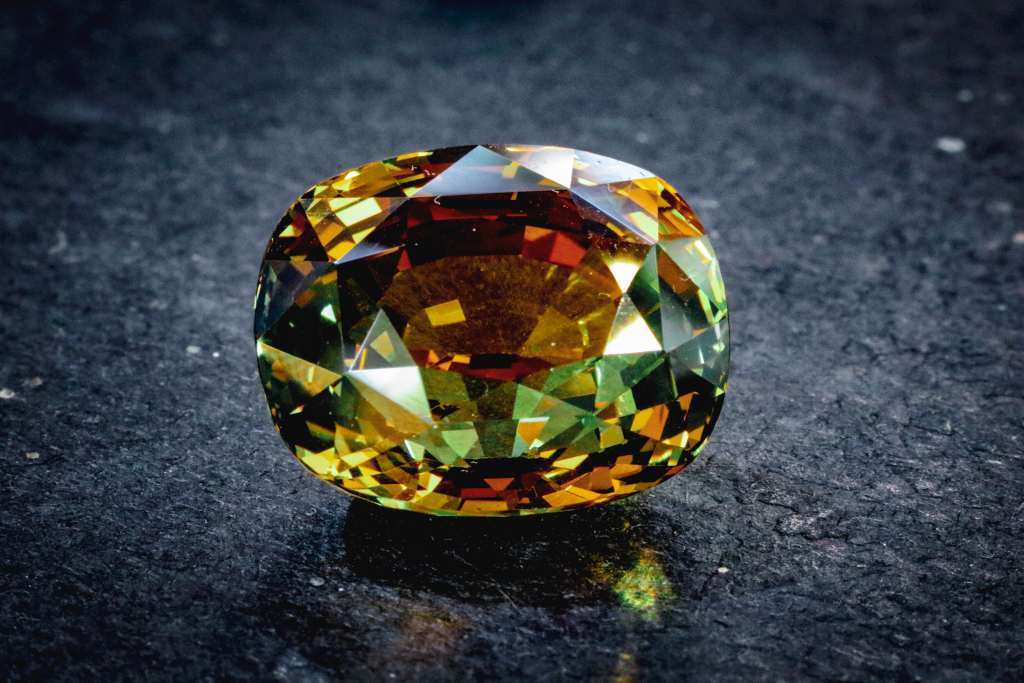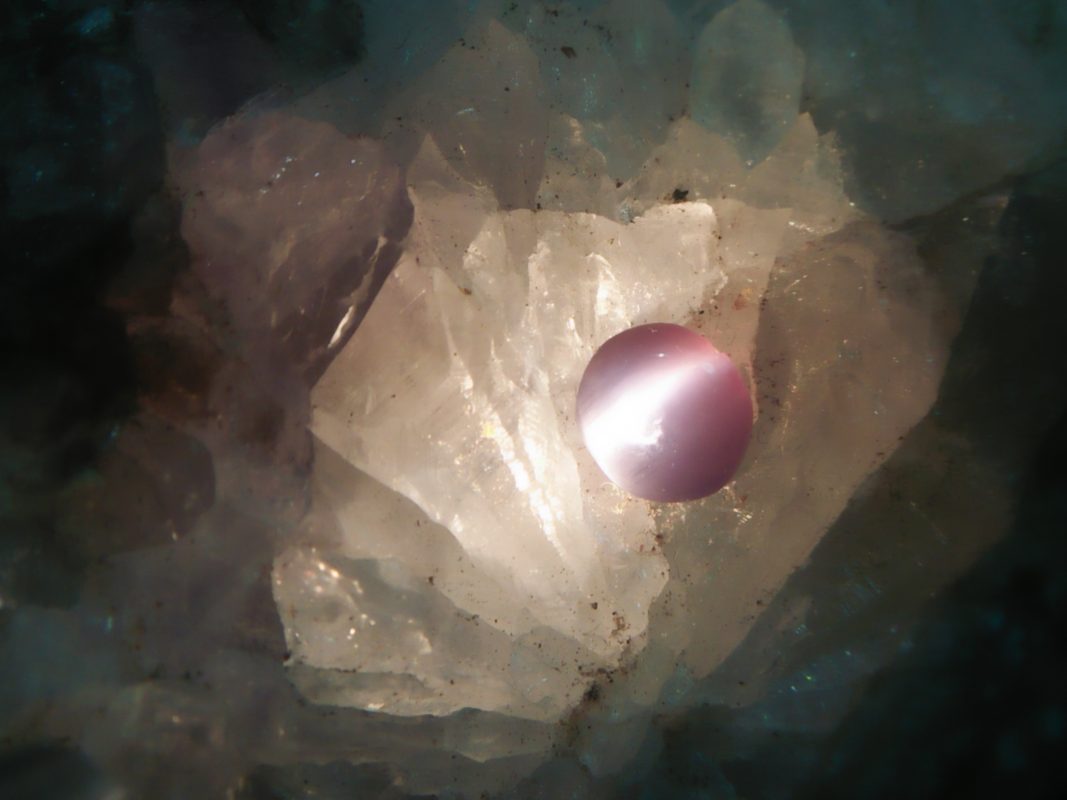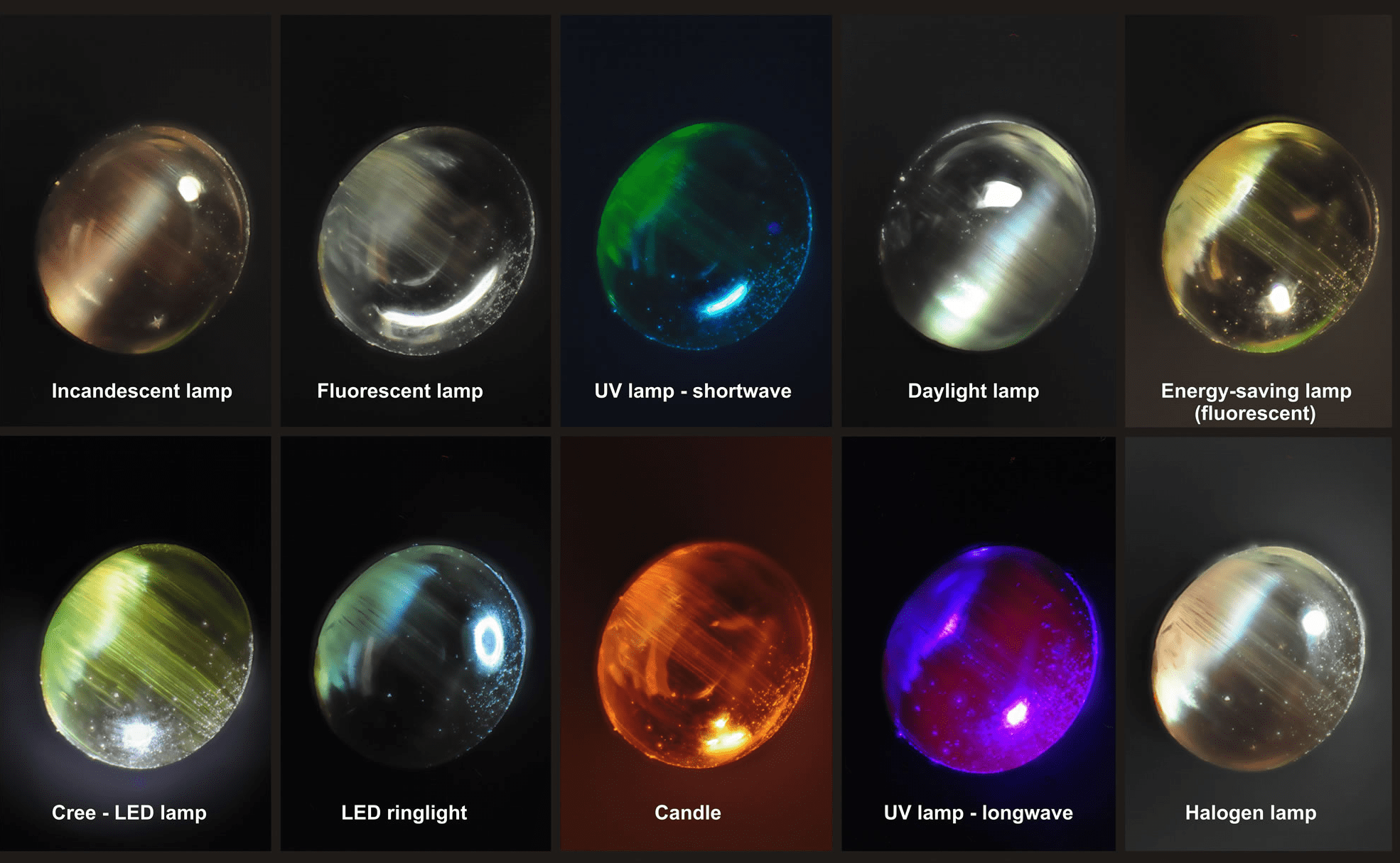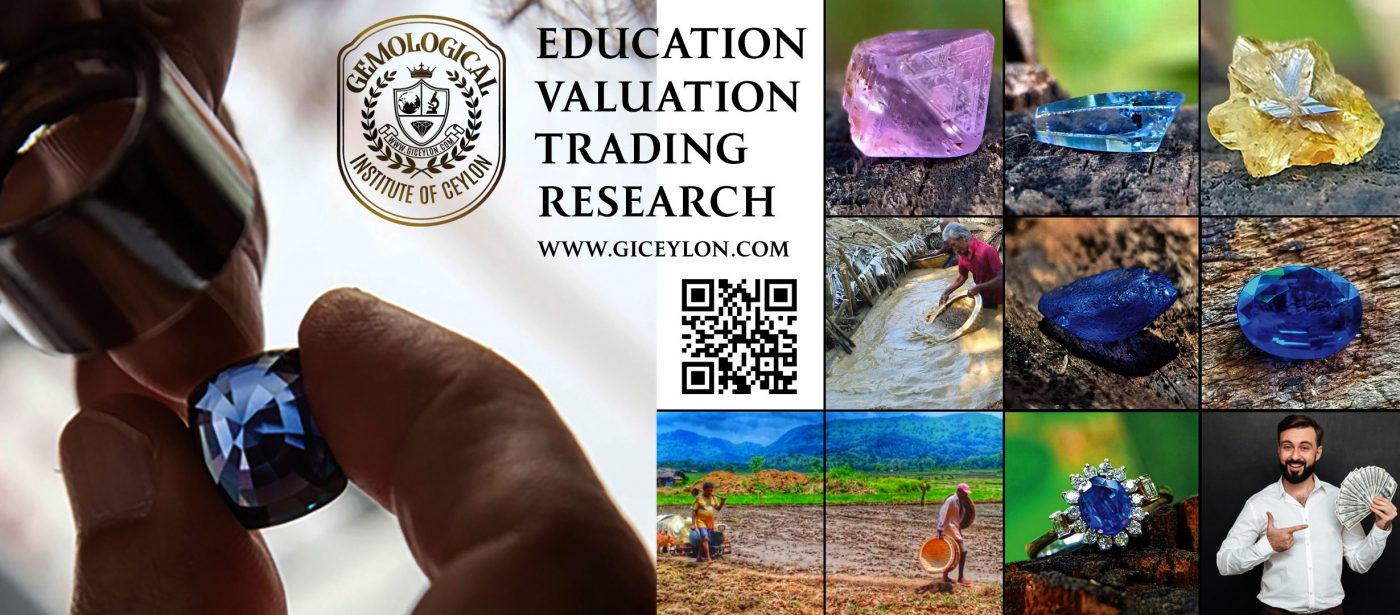Education
Alexandrite
Alexandrite

| Name | Alexandrite |
| Is a Variety of | Chrysoberyl |
| Crystallography | Orthorhombic |
| Refractive Index | 1.745–1.759 |
| Colors | Varies in color with incident light: green, blue-green, or pale green in daylight; mauve, violet to red, purplish in incandescent light. |
| Luster | Vitreous. |
| Hardness | 8.5 |
| Wearability | Excellent |
| Fracture | Weak conchoidal to uneven. |
| Specific Gravity | 3.68–3.80 |
| Birefringence | 0.009–0.010 |
| Cleavage | Distinct to poor, 1 direction. |
| Dispersion | 0.015 |
| Heat Sensitivity | Yes. |
| Luminescence | Weak red in SW and LW. |
| Luminescence Present | Yes |
| Luminescence Type | Fluorescent, UV-Long, UV-Short |
| Special Care Instructions | None |
| Transparency | Opaque to transparent. |
| Absorption Spectrum | Narrow doublet at 6805/6875, with weak, narrow lines at 6650, 6550, and 6490 and broad band at 6400-5550. Total absorption below 4700. |
| Phenomena | Color change, chatoyancy (very rare). |
| Birthstone | June |
| Formula | BeAl2O4 + Cr |
| Pleochroism | Deep red/orange-yellow/green. (Myanmar gems anomalous: purple/grass-green/blue-green). |
| Optics | See “Identifying Characteristics” below. Biaxial (+), may also be (–), 2V = 70°. |
| Optic Sign | Biaxial +, Biaxial – |
| Etymology | Named after Czar Alexander II of Russia. |
| Occurrence | Occurs in pegmatites, gneiss, mica schist, dolomitic marbles; also found as stream pebbles and detrital grains. |
How Rare is Alexandrite?
If not for alexandrite’s popular associations, the circumstances necessary for its formation, combined with its mining history, might have ensured the gem would be little known as well as extremely rare. To form, alexandrite requires both beryllium (Be), one of the rarest elements on Earth, and chromium (Cr). (Emerald also requires these two elements). However, Be and Cr rarely occurs in the same rocks or in geological conditions where they interact. Furthermore, the original source of alexandrites was almost exhausted after only a few decades of mining. Since the 1980s, more sources have emerged. Nevertheless, alexandrite remains one of the rarest gemstones.Cat’s Eye Alexandrites
 Alexandrite is a variety of the gem species chrysoberyl, well-known for its chatoyancy or “cat’s eye” effect when cabbed.
As members of this species, alexandrites can also show a cat’s eye effect.
However, such gems are quite rare.
Alexandrite is a variety of the gem species chrysoberyl, well-known for its chatoyancy or “cat’s eye” effect when cabbed.
As members of this species, alexandrites can also show a cat’s eye effect.
However, such gems are quite rare.
Identifying Characteristics
Color Change
The color change gemstone phenomenon can occur under a variety of lighting types. When grading an alexandrite’s color change, gemologists consider the stone’s color in natural sunlight as the baseline. Thus, the classic alexandrite color change is green in sunlight and red in incandescent light. However, other types of lights can produce other colors, as shown below.
Alexandrite color changes. Photo: J. Weyer.
Regional Variations in Alexandrites
Brazilian alexandrites tend to have pale colors, pale blue-green to pale mauve. However, finer gems have been found recently in limited quantity. Gemologists have detected substantial amounts (1,200 ppm) of the element gallium (Ga) replacing aluminum (Al) in some Brazilian materials.Synthetics
A considerable market exists for lab-created alexandrite, first synthesized in the 1960s. Manufacturers can grow alexandrites through melt, hydrothermal, or flux methods. These synthetic stones have the same chemical and physical properties as natural alexandrites. They are real alexandrites but not natural. Although the synthetics cost far less than their natural counterparts, they still rank among the most expensive synthetic gemstones available. Gemologists can sometimes identify synthetic alexandrites by inclusions caused by various growth procedures. Melt techniques, like the Czochralski method, can create curved striae. Hydrothermal growth can create bubbles and liquid inclusions. Flux methods can leave inclusions of platinum or other seed materials. A considerable market also exists for lookalikes or simulants. These can range from synthetic corundum with alexandrite-like color change (produced very inexpensively) to actual, natural color-change chrysoberyl stones. Although alexandrite is a variety of chrysoberyl, not all color-change chrysoberyls are alexandrites. These gems also command a high price, but, again, not nearly as high as alexandrites. Buyer beware. If you find an alexandrite at a relatively bargain price, it’s likely not natural and possibly not an alexandrite. A professional gemological laboratory can make a determination.Enhancements
Natural alexandrites usually don’t receive any treatments.Sources
Mines in the Urals have re-opened but only produce a few carats of gem-quality material each year. In 1987, alexandrite was discovered in Brazil and later in Madagascar, Myanmar, Sri Lanka, and Zimbabwe. However, none of these sites produce as rich and vivid a color change as the original Russian source. The main source of large, natural alexandrite gems today is actually antique jewelry.Stones Sizes
The largest known faceted alexandrite, a 65.7-ct green/red color change stone from Sri Lanka, resides at the Smithsonian Institution. The largest Russian gems weigh about 30 carats. However, the vast majority of alexandrites weigh under one carat. Stones over five carats are very rare, especially with good color change. Other alexandrites of notable size included in the following:- British Museum of Natural History (London): 43 and 27.5 cts (Sri Lanka).
- Institute of Mines (St. Petersburg, Russia): a cluster of three crystals, 6 x 3 cm (Urals).
- Fersman Museum (Moscow, Russia): crystal group, 25 x 15 cm, crystals up to 6 x 3 cm (Urals).
- Private Collections: stones up to 50cts have been reported.

